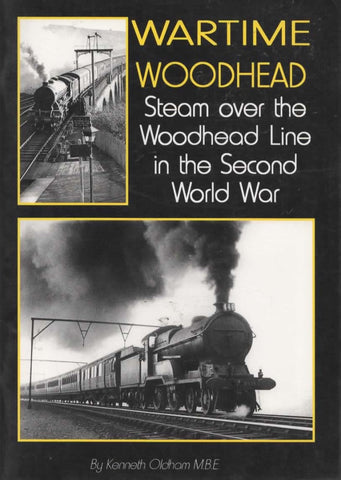Wartime Woodhead: Steam over the Woodhead Line in the Second World War (IR440)
Product No.: IR440
Title: Wartime Woodhead: Steam over the Woodhead Line in the Second World War
Author(s): Oldham, Kenneth
Illustrator(s): N/A
Publisher: Irwell Press
ISBN: 1903266440
Condition: New
Binding: Softcover
Dust Jacket: None
Edition: 1st Edition
Publication Year: 2004
Features: 76 Pages with Black/White Photos.
The Woodhead Line was a railway line linking Sheffield, Penistone and Manchester in the north of England. A key feature of the route is the passage under the high moorlands of the northern Peak District through the Woodhead Tunnels. The line was electrified in 1953 and closed east of Hadfield in 1981. The route from Manchester to Sheffield was 41.5 miles with stops at Manchester, Guide Bridge, Newton, Godley Junction, Mottram, Glossop and Dinting, Glossop Central, Hadfield, Crowden, Woodhead, Dunford Bridge, Hazlehead Bridge, Penistone, Wortley, Deepcar, Oughty Bridge, Wadsley Bridge, Neepsend and Sheffield.
The line opened in 1845. It was built by the Sheffield, Ashton-Under-Lyne and Manchester Railway with Joseph Locke as its engineer. In 1847 the railway merged with the Sheffield and Lincolnshire Junction Railway, the Great Grimsby and Sheffield Junction Railway, and the Grimsby Docks Company to form the Manchester, Sheffield and Lincolnshire Railway, which changed its name to the Great Central Railway (GCR)) in 1897. Ownership passed to the LNER in 1923, and finally to British Railways Eastern Region in 1948.
The original eastern terminus of the line was at Bridgehouses station. By the time of the creation of the Manchester, Sheffield and Lincolnshire Railway in 1847 the station at Bridgehouses had been outgrown. A 1 km extension ( including the Wicker Arches viaduct, engineered by John Fowler ) was constructed to the new Sheffield Victoria Station, which opened in 1851.
Electrification was first mooted by the Great Central Railway owing to the difficulties of operating heavy steam-hauled coal trains on the Penistone-Wath section (the Worsborough branch), a line with steep gradients and several tunnels. Definitive plans were drawn up by the LNER in 1936; many of the gantries for the catenary (electric wires) were erected before World War II. World War II prevented progress on electrification, but the plans were restarted immediately after the war.



